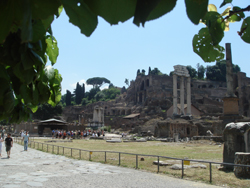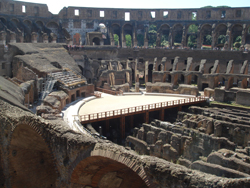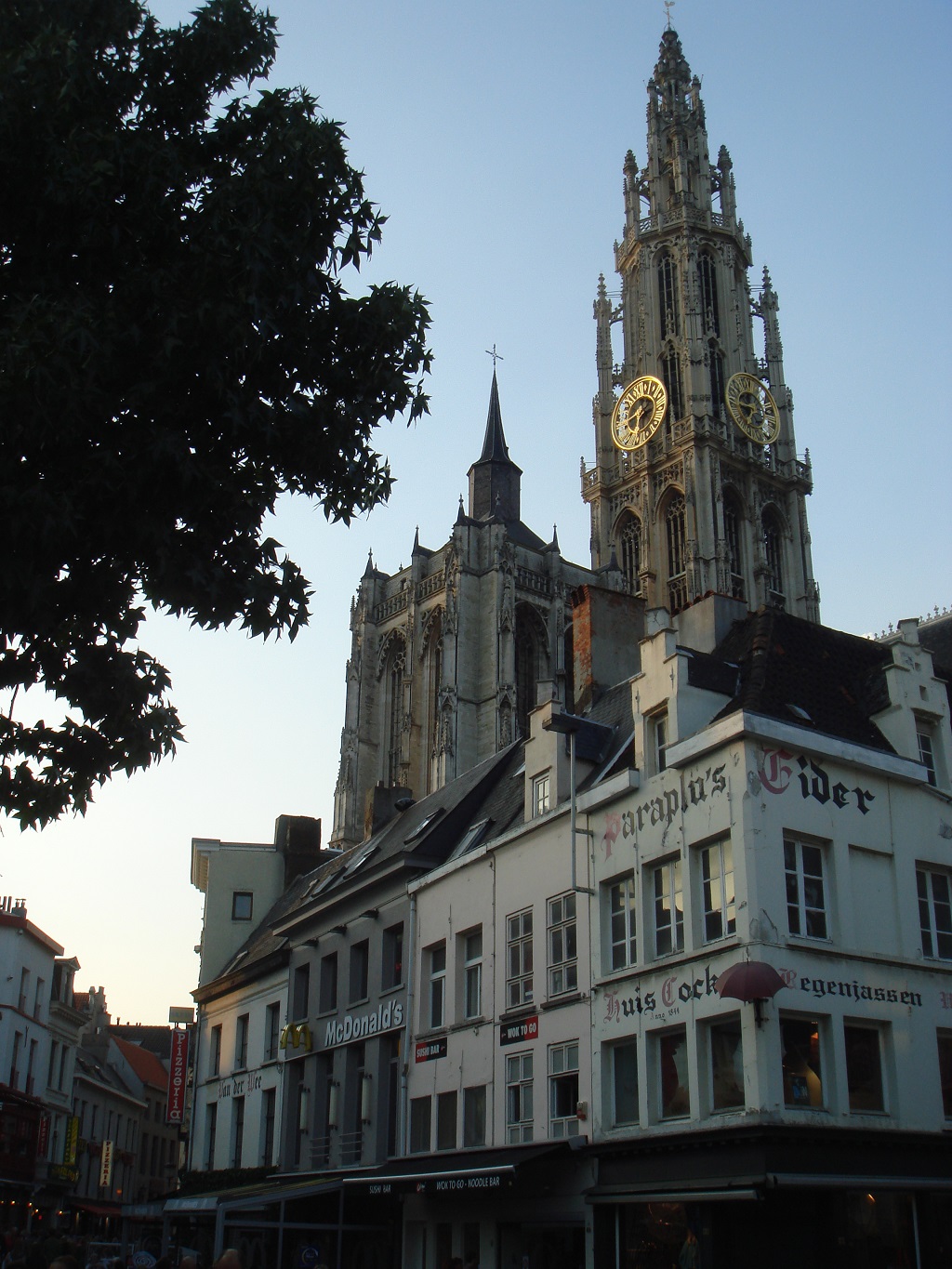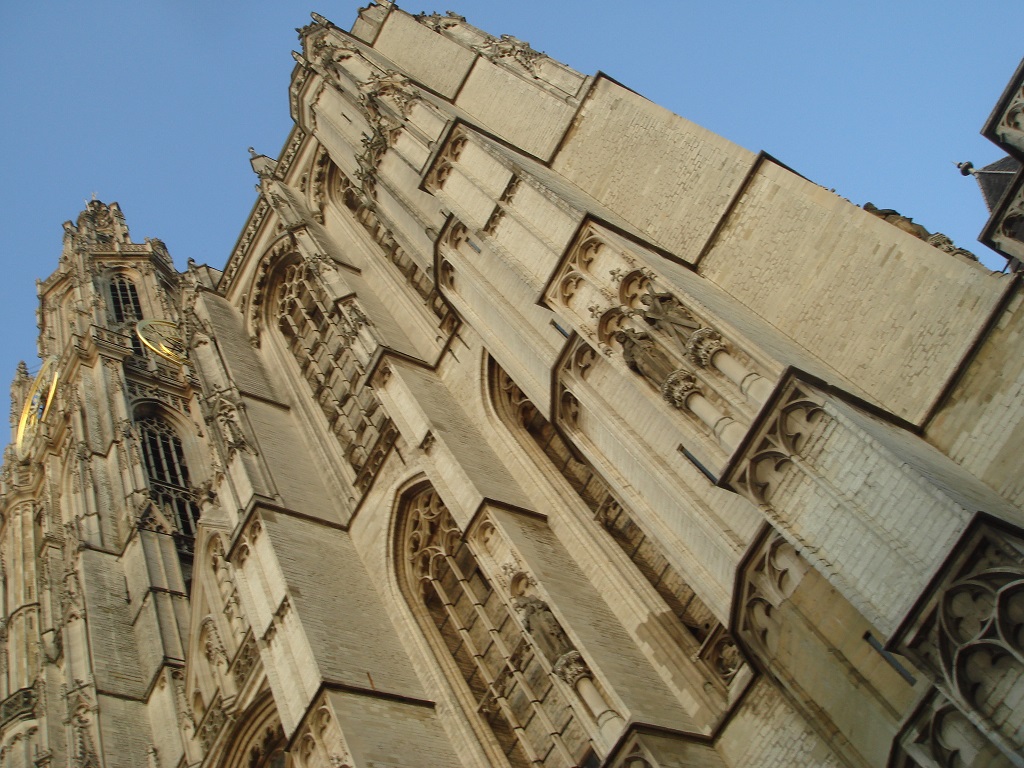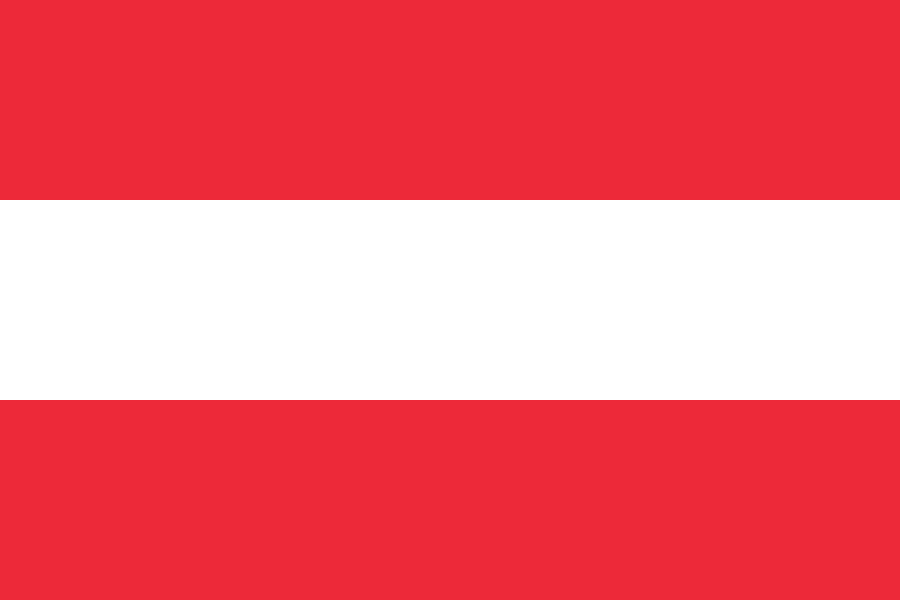[ Trip Overview ] [ Why we did this trip ] [ Egypt ] [ Eclipse day ] [ Libya ]
28 March 2006
We arrived at our government-run hotel in Tobruk around mid-day. From our room window we can see the cruise-liner MSC Sinfonia docked.
The walk from the hotel into town circumnavigated the bay area and took us around 30 minutes. As Libya's third-largest city, one might come to expect art, culture and architecture from Tobruk. Not so. Tobruk was heavily fought over during the Second World War for it's strategic location - not for it's aesthetic beauty.
We walked through the market. Meat hung from hooks. A camels head hung from one hook. It was clearly fresh, with it's skin still on and eyes still bulging from it's head. People are as curious about us here as they were in Tripoli. Who are these strange people - they wondered - and were they here for the Eclipse?
There was a quite clearly a knowledge and anticipation of the upcoming Eclipse and people seemed to be genuinely excited about it.
As we continued through Tobruk we discovered nothing much other than the shops.
On our return journey, we encountered a church. It was closed and had clearly been left to decay for some years. The stained glass had been replaced with plain glass. All icons had been removed from the exterior, including the cross that traditionally perches above the entrance. The columns had been painted Green - the colour of Islam.
Some things we learnt today
Universal education in Libya begins at 6 years of age and completes at 18 years. After completing school, it is possible to attend one of the 15 or so universities in Libya or a trade school. At the trade schools, wages are received. Recently private schools and universities have begun to open.
Women received the right to vote in 1963.
The scarf is worn by women in Libya. It is not so "heavy" as in Saudi or as liberal in Egypt or Tunisia.
28 March 2006
We left Appollonia at 0830 under blues skies and bright sun and continued east through the Green Mountains. We drove through Derna.
We stopped at the Commonwealth "Kensington" War Graves. Over 3,600 young soldiers lie in Kensington. Soldiers from the British, New Zealand, Australian, South African, Polish, Yugoslav and Hellenic armies are buried here. Neither myself or my colleague identified a single body over the age of 41. The youngest was 18. It is difficult to comprehend so many coming so far to die so young.
From Kensington we headed to the Fig-Tree Field Hospital. A fig tree stands above a cave in which the wounded were treated. It seemed so irrelevant now.
27 March 2006
We headed east from Benghazi, Libya's second largest city and one of the Pentapolis, towards Tokra where we left the Libyan coastline.
Here the soil is much redder than in Tripoltania. We rose into the Green Mountains which is a much more fertile land. There are visibly more sheep, goats and cattle here, including herds of Camel. Sheep are regarded as a delicacy in Libya costing around 10LD to 13LD per kilo while Camel comes in at around 7LD per kilo.
After the Revolution by The Good Colonel, Libyan land was redistributed and is now privately owned by those Libyans who work upon it. However, many of the shepherds which work are from Niger or Chad. Some shepherds also come from Egypt or Tunisia. It appears that many Egyptians and Tunisians come to Libya for work.
The Green Mountains provided the basis for the rebellion against the Italian occupation of Libya. The mountains provided much protection for the revels and their leader, Omar al-Mukthar. Many years later, the film "The Lion of the Desert" documented the rebellion. Starring Anthony Quinn, "The Lion of the Desert" was filmed in the Green Mountains and Wadi al-Kuf ("Valley of the Caves.") Omar al-Mukthar now features on the 10dinar note.
At Wadi al-Kuf, we stopped and crossed the large modern bridge on foot. At 200 meters above the valley floor. The Valley is nothing short of breathtakingly awesome and the bridge affords some excellent views of the valley floor and the caves that scatter the sides of the valley. The winds that run through the gorge are brisk, to put it mildly. The bridge was built by a Thai firm, we are told, during the period of isolation.
We continued past Al-Beyda and past Omar al-Mukhtar University. As Al-Beyda was Omar al-Mukhtar's home town, the mosque which is run the Society of Islamic Movement. From here we continued to our visit to Cyrene.
Other things we learned today
The Touick and Tabou live in southern Libya. These tribes are related to each other and intermarriage is common. They speak their own language as well as Arabic.
All petrol distribution in Libya is performed by a single government-owned firm.
26 March 2008
We entered the Souq (or Market) in the Medina through the gate next to the Citadel which now houses the Libyan National Museum.
From the souq, we almost immediately proceeded to get lost. Our map was close to useless with the small alleyways and main roads indistinguishable from each other. It seemed main roads and alleys were randomly marked on the map. We asked a very helpful shopkeeper who was more than happy to get us back on track. We rejoined the walking tour that was outlined on our map.
The renovated Catholic church is now a gallery (2LD entry, 2LD camera, 4LD video). The temporary exhibition on show was made up from purely local Tripoli artists. On the right hand wall as we entered, hung a large piece of oil on canvas. The caretaker was keen to explain that this depicted scenes from the Palestinian intifada. A clenched fist held a rock as a tank approached. A woman looked distressed as a single piece of barbed wire covered her face. The message was clear.
A caretaker at the Orthodox Church of St George opposite the Catholic Church opened the church for us. The church was rather small with various depiction's of George. A tip of 1LD is customary in Libya if a caretaker should open a place especially for you.
Wandering further, we once again departed our walking tour plan. Carumba! We were at the coast now. The medina stood behind us. A quick check of the map showed the large building in front of us that looked much like a water tower but was too large to be one and no road behind us back into the Medina. There was a road behind us. It did goto the Medina. We'd just walked down it. It looked the same size as all the others. It wasn't on the map.
We were in a square. A recently re-painted pastel yellow building stood on the corner of the road we had just walked down. The edges of the windows sported various coloured tiles. The door was blue. Another stood proud and decaying. Like a old proud Swan that had seen better days. It had a flat roof - the building, not the Swan. A laugh rang out as I clumsily knocked my hat off while attempting to take a photograph. Looking around, I hadn't noticed the boy on the flat roof. Cracking a smile, I waved at him. He waved back. A man came out of the yellow building. A French speaker. The building is a hotel, apparently. There were no signs to indicate so - but there weren't any signs on anything in the Medina. Who were we? Where did we come from? Why were we in Tripoli? Tripoli was curiously watching us.
After taking lunch, we made our way through the Medina back to Green Square. We browsed the latest in Tripolian fashion on the Sharia 1st of September en route to Algeria Square. Part way along, we encountered an Italian-style piazza. While the exterior of the buildings were in decay with pealing paint, the shell conrnicing and stucco-work betrayed a glorious and beautiful past. One can imagine the piazza bustling with people smoking cigarettes and drinking coffee in it's heyday.
 Further
along, we finally discovered what we were looking for a rather
impressive and large Mosque. As we approached the gates to
the Mosque, a conservativly dressed woman beckoned us into
the grounds. She keenly gestured to my wife to follow her.
We entered the grounds of the mosque - a little uncertain of
what we would find. A man rushed out of a door we hadn't seen
before to stop both of us from following the ladies. The ladies
had disappeared. It was a little confusing as we were in an
unfamiliar country whose language we did not speak. All mosques
are actually divided into seperate for men and women so quite
why the man stopped both of us is still a bit of a mystery.
Further
along, we finally discovered what we were looking for a rather
impressive and large Mosque. As we approached the gates to
the Mosque, a conservativly dressed woman beckoned us into
the grounds. She keenly gestured to my wife to follow her.
We entered the grounds of the mosque - a little uncertain of
what we would find. A man rushed out of a door we hadn't seen
before to stop both of us from following the ladies. The ladies
had disappeared. It was a little confusing as we were in an
unfamiliar country whose language we did not speak. All mosques
are actually divided into seperate for men and women so quite
why the man stopped both of us is still a bit of a mystery.
25 March 2006
En route to Leptis Magna from Tripoli, we drive through Tanjur and past it's specialist heart hospital. The mosque at Tanjur contains 48 columns which were taken from Leptis Magna and have now been painted.
The road continues through fertile olive groves and on our right we can see some mountains. Many of the groves were owned by Italians but are now owned by the Libyan Government. Along the road-side there is the occasional seller of olive oil, honey and juices. The sellers work on a trusts system where you are trusted to leave the correct money for goods you wish to buy.
The suffix "Magna" was added to distinguish Leptis from "Leptis Minor." Leptis Magna was conquered by Julius Caesar in 34BC. It would flourish under the Roman Emperor Septimus Severus who was born in Leptis Magna. Septimus Severus preferred to live in home town than Rome and built up both Leptis Magna and Sabratha. The building would continue under Septimus Severus son and grandson, who would succeed him as emperor.
Under control of the Vandals in the fifth century, the walls of Leptis Magna were destroyed. While the Byzantines would ultimately rebuild the walls, they would cover a much smaller area - which would ultimately allow the sand to settle to preserve the city.
The Arch of Septimus Severus is a copy of the original which now stands in the Museum in Tripoli. The theatre of Leptis is south facing, which allowed the stage to be naturally lit as well as ensuring that the audience would not be dazzled by the sun. The orchestra pit is acoustically well designed to allow the sounds to travel trough the whole theatre.
At its peak, Leptis Magna was one of the largest cities in the world with a population of between 80,000 and 100,000 people.
The Basilica of Leptis Magna is as large as it is impressive. During the Christian period, the Basilica was converted into a Church. At one end of the Basilica, there is a baptistery. The Baptismal font is of the "full-immersion" variety - ie the whole body of the person being baptised would be immersed in the font. At the opposite end of the Basilica, close to where the altar used to be stands a column depicting the twelve tasks of Hercules.
24th March 2006
Along the coastal road in Tripoli, we drove past "The Five Towers", so called as they can only be seen as five from the sea on account of them having been built in the shape of a crescent. Further, we pass a state-owned hotel. Income from state-owned hotels is used to pay for the Libyan social-security system.
The litter on the beaches betray their lack of use. Any expansion of Libya's tourist industry will require the Libya to clean it's beaches. Cleaner beaches will benefit both locals and visitors alike.
Libya is a predominantly Muslim country. The Christian community in Libya is mainly Egyptian but is also from other African countries. The flag of Libya is Green with no symbols on it. The colour green was chosen as it is the colour of Islam.
We drove past a power plant, next to which stands a desalination plant. Desalination plants are often located close to the power stations for logistical ease and close to the Med owing to the limited water resources inland. Extensive irrigation underground is used to cultivate the citric fruits and olives which are grown in this area. We discover that petrol is cheaper than water. Benzene costs 15piastas per litter, diesel 12piastas per litter. Water costs 1dinar per litter.
Seventy percent of Libya's population is located in the north-west of the country.
 Sabratha
itself was originally a Phoenician trading port. Sabratha reached
it's zenith under the rule of the Severan emperors as the Roman
Emperor Septimus Severus was born in nearby Leptis Magna.
Sabratha
itself was originally a Phoenician trading port. Sabratha reached
it's zenith under the rule of the Severan emperors as the Roman
Emperor Septimus Severus was born in nearby Leptis Magna.
Date: 23 March 2006
Having cleared immigration and customes, we were met off our Swiss flight but our tour leader Dick Cijffers at Tripoli airport. During the brief wait for the Emirates flight which was bring the rest of our group we took the oppurtunity to change some local money at the Airports currecny facilties and enjoy our first taste of Libyan coffee at a rather pleasant coffee shop on the first floor.
We left Zürich on the 0945 Swiss flight to Tripoli. Having arrived on time, our visas were issued at Tripoli airport as the Libyan government had made special arrangements for those travelling with specially organised eclipse trips. Having met Dick Cijffers, our guide, we had a coffee on the fourth floor of the airport while we waited for the Australian contingent of our group to arrive on the Emirates flight 20 minutes later.
Once we had all cleared immigration and collected our luggage, we made our way to the spacious Blue Ship Hotel at around 16:30. At a briefing at 18:00 in the hotel's conference room, Dick introduced himself before briefing us on cultural issues in Libya, such as the lack of existence of bargaining, political issues and currency.
Peter Anderson, a leading light of the Astronomical Association of Queensland, distributed maps of the Eclipse path as well as a meteorological summary of the eclipse viewing sites in Libya. Our site for viewing the Eclipse would be around 150km inland. The met outlook basically looked good. Close to no chance of rain as we were far enough from the Med, and minimal chance of sandstorms or similar as the relevant weather features rarely pass this location.
With the meeting over, we proceeded to our buffet dinner and got to know the other members of our group.
I have to admit that I am totally excited to be here in Libya!
